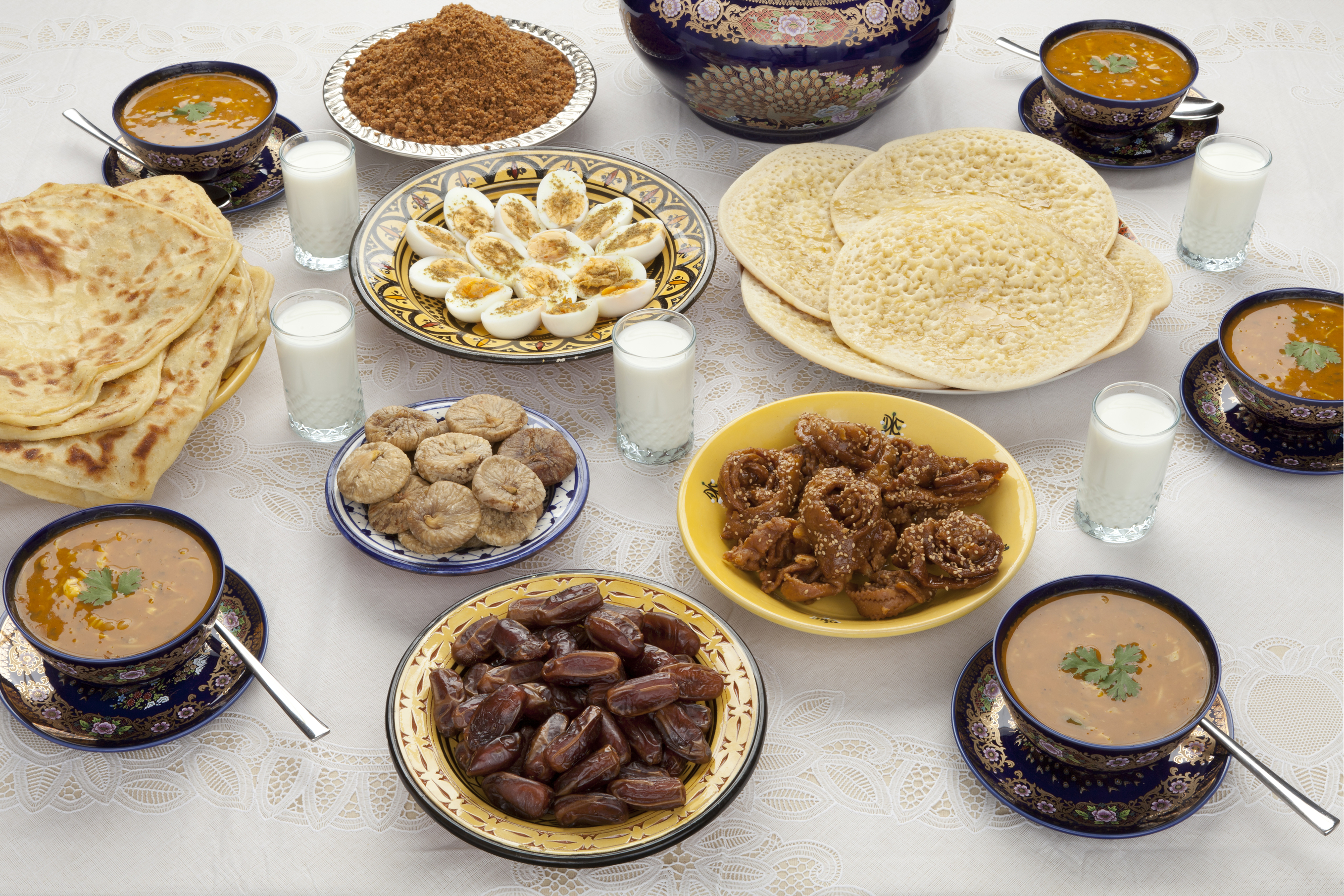It’s Ramadan, which is a time of fasting. This also means there are occasions for fast-breaking. While fasting lasts from sunrise to sunset, Iftar is the name of the communal meal breaking the fast and served after sunset. At the end of Ramadan, there is a three-day festival, Eid al-Fitr, where food is a celebrated religious and cultural experience. Whether you are planning a Ramadan-themed communal meal, a banquet, or a festival celebration, here are a few delicious foods commonly consumed for Ramadan fast-breaking.
- Dates & Fruits: these are a very popular offering for the after sunset feasts because they promote digestive health and provide a nice energy boost. Having access to fruits in a diet where you haven’t had much in the way of food can be a powerful tool, and this is why so many meals include them. Dates in particular, prepare the stomach to receive food by activating and decrease the hungry feeling so the person doesn’t rush into excessive eating. Constipation is a common side-effect of fasting. Dates and fruit will also help to keep this in check.
- Chicken Chaska: a lightly breaded chicken and vegetable dish that contains a spiced paste drizzled across the noodles, chicken and veggies. The paste is what gives the chicken its flavor and Chicken Chaska is a popular choice because it’s fairly light. This dish contains garlic and ginger, so it’s also served to improve digestion – an important consideration when your system is dealing with fasting or irregular meals.
- Kabuli: a chicken or lamb and rice dish that is a popular choice for Iftar because it provides that essential energy we need after a day of non-consumption. The dish contains ginger to help settle the stomach as well as plenty of carbohydrates. Kabuli is one of the best ideas to serve as a side dish or light main course. It also makes for an excellent vegan option.
- Haleem: This is often called a delicacy and while it is popular in India, the Middle East, Central Asia, and Pakistan. It is especially popular in Hyderabad, India. Other regions of India will favor other dishes or variations. This particular dish is called a labor of love because it is slow cooked. Haleem is a combination of shredded or minced meats, wheats and barley, lentils, ghee, and spices, especially allspice. This dish is also known as a popular power breakfast because of the high-powered, long-lasting energy boost.
- Nombu Kanji: is a popular Ramadan dish, especially in Kerala, along the Arabian Sea and in Tamil Nadu, a Southeast Indian state. Prepared with meat, veggies, and rice, cooked into a porridge consistency, Nombu Kanji is a famous Iftar menu item that can be prepared as a vegetarian or non-vegetarian option. It’s not only a beautiful dish, but it’s healthful and nutrient-loaded.
- Sevian With Peach Murabba: Sevian is a fantastic dessert item that can be cooked with butter and spices and then embellish with a compote of peach jelly. This is a light dessert that is relatively unsweetened so it won’t cause headaches or other common issues associated with fasting and fast-breaking.
The act of fasting for Ramadan is intended to teach self-discipline and self-control. Sacrificing food, something commonly taken for granted, is meant to encourage empathy for those less fortunate. Even those who are excluded from the fast due to health reasons are expected to participate by providing food to someone lacking regular access for the month of Ramadan. The act of fast-breaking, while created as a communal meal and celebration, is not supposed to be gluttonous. It is supposed to be a reverent intake of nutrients and is an extension of the fast by encouraging gratefulness for what is now available that wasn’t before and for what continues to be unavailable to many.



